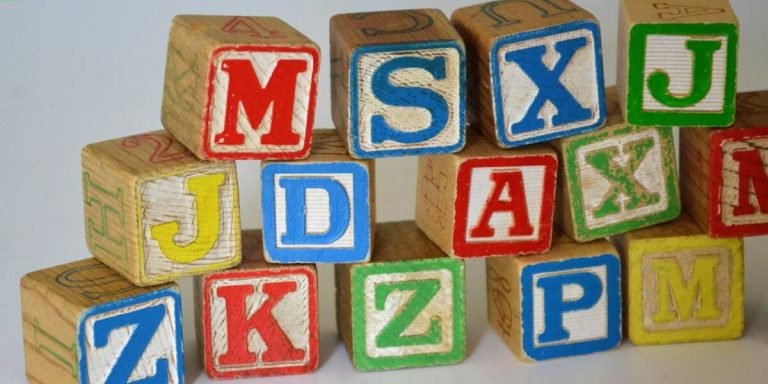Sensory Disorder Types: A Comprehensive Overview for Parents and Educators
Addressing sensory disorder types is an integral aspect of special education resources and support. Sensory disorders can significantly affect a child’s ability to learn, socialize, and carry out basic daily activities. This issue goes beyond the inability to process information effectively; it alters how kids perceive the world around them.
This comprehensive overview aims to offer parents and educators a better understanding of various sensory disorder types. In this way, they gain deeper insights into what their children or students experience every day. Armed with accurate knowledge on these issues will greatly enhance their capability in providing an ideal educational environment that caters specifically for youngsters facing such challenges.
Did you know?
Did you know? Sensory Processing Disorder (SPD) can affect anyone, but it’s more commonly diagnosed in children than adults. In fact, studies suggest that 1 in every 20 children may be impacted by SPD to some degree.
Understanding Sensory Disorder Types in Special Education
The rise of technology integration in education has brought about a significant transformation, particularly when it comes to understanding and supporting special educational needs. One such area where increasing advancements have been noticed is the management and understanding of sensory disorder types.
Each day, educators are realizing the importance of identifying and addressing various sensory disorders in children at an early stage. This includes conditions like Sensory Processing Disorder (SPD), Autism Spectrum Disorders (ASD), Attention Deficit Hyperactivity Disorder (ADHD) among others which significantly impact how a child interacts with their environment. Technology now offers innovative tools for diagnosing these conditions precisely, making way for more personalized modes of learning that cater to each student’s individual requirements.
Also vital is equipping teachers with appropriate resources aimed towards assisting students dealing with different forms of sensory disorders. Thanks to technological advances in teaching aids ranging from specialized software applications to virtual reality headsets – professional development training programs can better equip educators on handling diverse classrooms effectively while fostering engaging environments conducive for all learners including those grappling with identified or yet undiagnosed disorders.
Defining Sensory Processing Disorders: A Comprehensive Overview
Sensory Processing Disorders (SPDs) are a group of conditions that impact how individuals interact with the world around them. They can be challenging to identify due to their wide-ranging symptoms under different sensory disorder types which make each case unique. With our current advancements in technology integration within education, understanding SPDs has improved significantly.
Predominantly spotted during childhood years, these disorders affect children’s ability to receive and respond accurately to information from their senses – sight, hearing, touch, taste and smell plus two lesser-known ones: proprioception or body awareness and vestibular system dealing with balance & movement coordination.
Within Special Education Resources and Support realm today exists many innovative technological tools helping educators effectively grasp various sensory disorder types better than ever before. As an example consider Virtual Reality(VR). VR creates immersive multi-sensory environments enabling practitioners observe students’ interactions thereby identifying any potential issues related with processing distinct stimuli.
In continuity let us delve deeper into three primary categories of Sensory Processing Disorders:
1. Sensory Modulation Disorder – This denotes difficulty regulating responses towards sensory stimulus causing reactions that may seem too intense or insufficient compared against typical behaviors among peers.
Recognizing the Spectrum of Sensory Issues in Children
As parents and educators maneuver the landscape of childhood education, one inescapable reality is that some learners may struggle with sensory issues. Such challenges can impact how well a child reacts to his or her learning environment; thus understanding these sensory disorder types are crucial.
Sensory disorders often affect children’s capacity for perception, making it difficult to interpret their surroundings accurately. They consist of several different spectrums – each presenting unique symptoms and effects on a learner’s ability to function adequately within an educational setting.
Let’s delve into recognizing the spectrum of sensory issues:
1. **Auditory Sensory Issues**: Children affected by this disorder type might encounter difficulties discerning specific sounds from background noise or could experience distress during loud noises.
2. **Visual Sensory Issues**: Kids with visual processing problems might find difficulty focusing on written materials, distinguishing patterns or colors, or trailing moving objects.
3. **Tactile Sensory Disorder**: This involves heightened sensitivity towards touch-related stimuli – say textures such as clothing materials which they deem uncomfortable—causing significant distractions during lessons.
Essential Support Strategies for Students with Sensory Disorders
The educational landscape is continually evolving, and one significant shift we’re seeing in 2023 is the integration of technology to support students with sensory disorders. Identifying effective strategies for these students can be transformative, especially when it comes to integrating them into a mainstream classroom environment without compromising on their learning potential.
Sensory processing disorders affect how children perceive and respond to different sensations they encounter daily. Such as touch, taste or sound – which many of us may take for granted. In essence, what feels normal to most individuals could be intolerably loud or unbearably intense for those dealing with sensory issues; this results in disruptive behavior that interferes significantly during class hours.
Now more than ever before there’s an increasing awareness about incorporating technological tools tailored specifically towards assisting learners battling various types of sensory disorders. These solutions not only communicate information at a rate suitable for each student but also provide enriching education experiences that cater individual needs effectively.
Tailoring Classroom Environments to Meet Sensory Needs
Among various types of sensory disorder types that children may struggle with, hypersensitivity or hyposensitivity towards certain stimuli are common challenges. Environments filled with intense lightings, loud sounds, crowded spaces can sometimes overwhelm these youngsters.
In response to this issue in 2023 where technology integration in education has been on rise as an essential element for customizing educational experiences according to specific needs of learners,the approach towards classroom settings demands a new perspective.
Smart lighting systems offer adaptive brightness levels based on individual student preferences could be installed.This kind techno-solution provides controlled illumination easing visual stress among students who are sensitive to bright lights.Similarly,having noise-cancelling devices available ensures auditory distractions minimize helping those having difficulties filtering out background noises focus better.
Integrating Therapeutic Activities and Interventions
In an increasingly digital age, integrating therapeutic activities and interventions into the educational journey of students with sensory disorder types is a critical strategy. Exploring special education resources, along with technological tools can facilitate better engagement and learning outcomes for these young scholars.
On the other hand, specific tech-based solutions have emerged as effective intervention strategies in recent years such as Virtual Reality (VR) therapies or Augmented Reality (AR). VR offers immersive experiences that enable children experiencing sensory disorders like Autism Spectrum Disorder(ASD), ADHD etc., face challenges in controlled environments thereby improving their real-world interaction capabilities.
Meanwhile AR overlays additional information onto reality offering multi-modal stimulation via enhanced visual cues which helps build understanding without overwhelming them thus helping youngsters with sensory integration issues cope better.
Alongside using technology directly within therapies, it’s also essential we consider how incorporating various assistive technologies could support daily classroom life for learners dealing with different kinds of sensory disorders. For instance, picture communication symbols apps; software converting written text to spoken words; touch-responsive tablets aiding those struggling from tactile sensitivity—the list goes on showing full potential when combining creativity alongside cutting-edge developments happening within this field today!
Navigating Resources for Families and Educators on Sensory Challenges
Educators and families have a significant role to play in supporting children with sensory disorders. It’s vital to understand the breadth of resources available, which focus on both education and therapy for these unique challenges. From applications that aid text-to-speech translation for those struggling with auditory processing disorder to tactile learning tools designed specifically for kids facing proprioceptive dysfunction; technology has revolutionized how we approach special needs education.
Today’s advanced technologies integrated into our educational system offer an array of innovative solutions that help bridge the gap between conventional teaching methods and students’ diverse individual needs. Smart devices equipped with specialized apps primarily target sensory issues such as sound sensitivity or difficulty distinguishing colors, providing customized engagement opportunities while ensuring inclusive classrooms environments.
Furthermore, online platforms dedicated entirely towards parents and educators allow them share their experiences dealing with various types of sensory disorders encourages community building around this shared struggle. These forums often provide helpful tips about best use technological innovations, making it easier than ever before navigate through what can otherwise be overwhelming set circumstances when journeying alongside child one living sensory challenge.
Identifying Reliable Sources of Information and Guidance
In this digital age, it’s crucial to stay updated on sensory disorder types. Reliable resources can equip families and educators with a better understanding of these disorders.
Firstly, professional journals are an excellent source for the latest research about various sensory disorder types. Journals like ‘The American Journal of Occupational Therapy’ or ‘Journal of Autism and Developmental Disorders’ publish evidence-based articles written by esteemed experts in the field.
Moreover, national organizations such as The Sensory Processing Disorder (SPD) Foundation serve as valuable knowledge repositories featuring extensive educative material ranging from webinars to podcasts curated especially for families impacted by SPD.
Online forums can also act as lifelines offering communal support; parents often share their experiences navigating education systems armed with Individualized Education Programs (IEPs), tips around advocacy while forming connections within community members who understand their journey best!
Accessing Community-Based Programs for Additional Support
Support for children and educators grappling with sensory disorder types extends beyond the confines of traditional classroom settings. Local communities often offer an array of programs aimed at assisting families, foster caregivers, teachers, therapists and other care providers in managing day-to-day challenges.
One such resource includes community-based workshops and seminars on understanding different sensory disorders. These educational sessions provide insights into conditions like Autism Spectrum Disorder (ASD), Attention Deficit Hyperactivity Disorder (ADHD), Dyslexia, among others – all characterized by unique sets of sensory issues that interfere with learning processes.
Community centers also host events addressing assistive technologies to aid special education resources allocation within schools or homes. The rise in technology integration in education showcases how devices are crafted specifically to respond to a child’s specific needs; whether it may be providing auditory cues for ADHD students or visual aids for those with Dyslexia.
Local libraries can serve as crucial partners too – they frequently run inclusive reading groups incorporating adaptable tools from hi-tech e-readers allowing text modifications like font changes, colors adjustments etc., which accommodate various sensory processing preferences while boosting engagement levels simultaneously.
Summer camps catering exclusively towards kids experiencing sensory difficulties have been gaining noticeable traction since 2023 too – offering activities optimized for individual capabilities rather than age brackets alone. Besides delivering fun-filled holiday experiences without compromising safety measures inherent during social interactions wherein high-intensity stimuli hold potential triggering risks related to respective sensorial sensitivities.
Conclusion
Through this comprehensive exploration of sensory disorder types, our goal has been to equip parents and educators with a robust understanding. Acknowledging and comprehending these disorders are the first steps towards creating an environment that helps children thrive, irrespective of any hurdles they may face due to their unique neurology.
Our website is brimming with valuable resources on childhood education for both parents and educators – consider it your digital homework! Together we can shape supportive classrooms at school or home that understand individual needs. Feel free to dive deeper into other relevant topics here as well – because remember; knowledge inspires compassion, patience, innovation—and ultimately—success in educating our youngsters.







